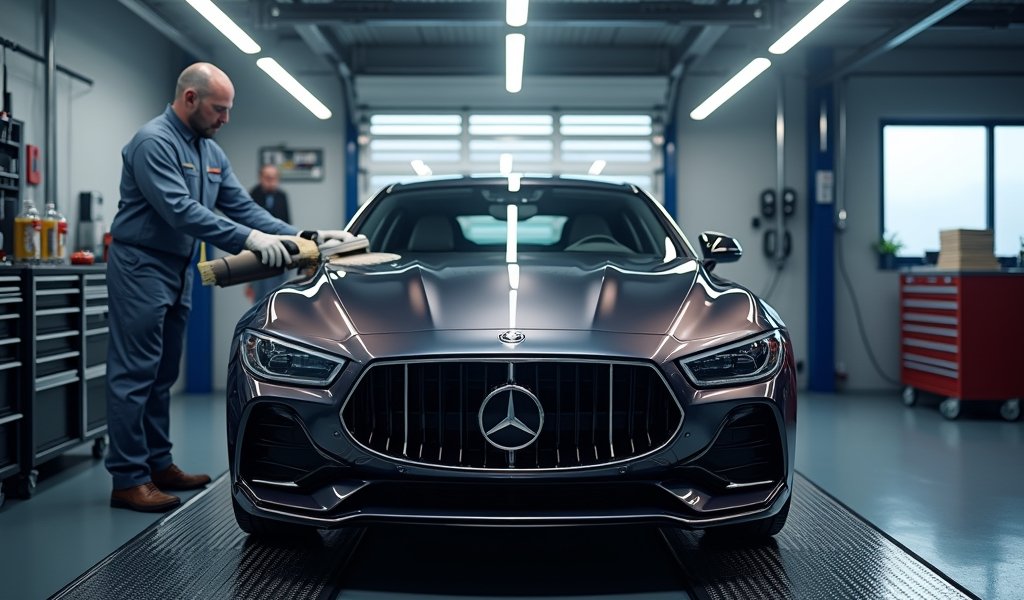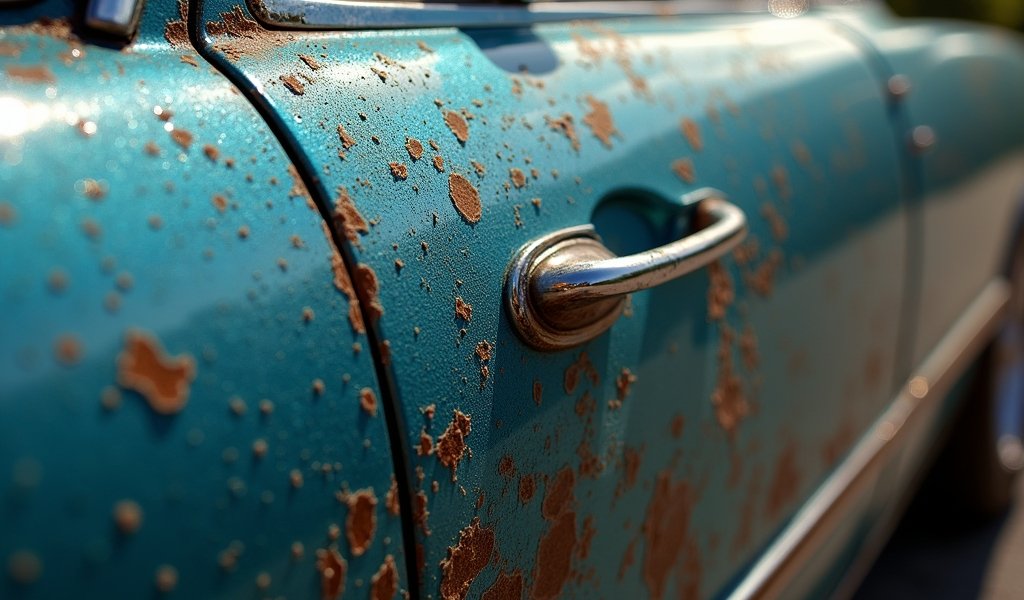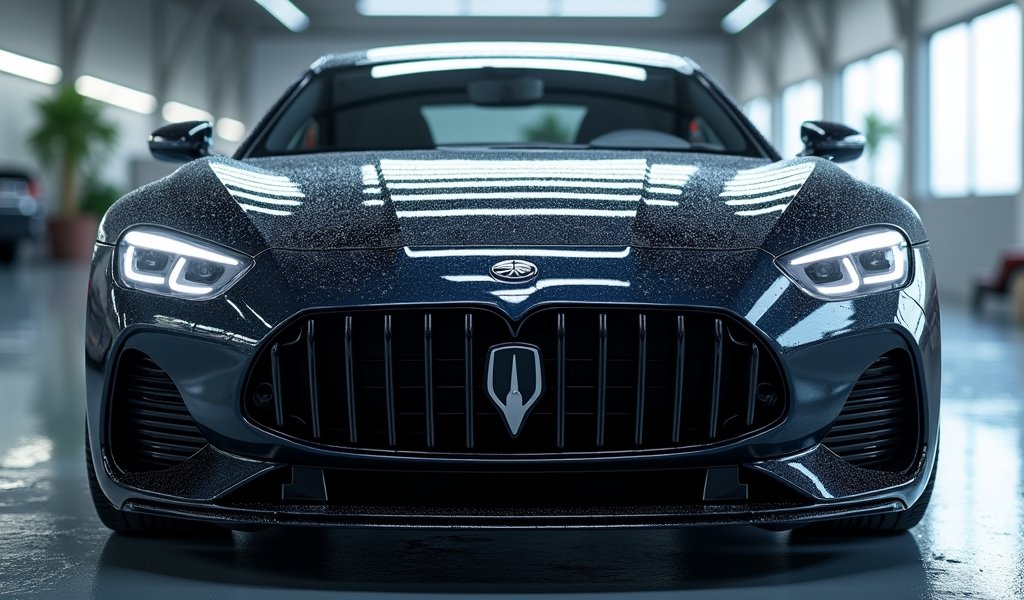Overview
This article outlines seven essential strategies for protecting your car’s paint: regular washing, waxing/sealing, ceramic coatings, paint protection film, proper storage habits, quick cleanup of harmful substances, and professional detailing. These methods not only maintain your vehicle’s appearance but also preserve its structural integrity and resale value over time.
Table of Contents
- Understanding Paint Protection: Why It Matters
- 1. Regular Washing: Your First Line of Defense
- 2. Waxing and Sealing: Creating a Protective Barrier
- 3. Ceramic Coatings: The Modern Shield
- 4. Paint Protection Film: Invisible Armor
- 5. Proper Storage and Parking Habits
- 6. Quick Cleanup of Harmful Substances
- 7. Professional Detailing and Paint Correction
- Conclusion: Maintaining Your Car’s Shine for Years
- Frequently Asked Questions
Understanding Paint Protection: Why It Matters
Your car’s paint is more than just a pretty face. It’s actually the primary barrier between your vehicle’s metal body and everything Mother Nature throws at it. Without proper protection, that shiny exterior can quickly fall victim to oxidation, UV damage, chemical etching, and physical abrasion.
After 20 years in the auto repair business, I’ve seen firsthand how protected paint keeps cars looking newer longer and maintains resale value. Most folks don’t realize that replacing damaged clear coat and paint can cost thousands—far more than the modest investment in proper protection.
The good news? Protecting your car’s paint isn’t rocket science. With some basic knowledge and regular maintenance, you can keep your ride looking showroom-fresh for years to come. Let’s dive into the seven most effective strategies I recommend to my customers at the shop.
1. Regular Washing: Your First Line of Defense
Believe it or not, regular washing is the single most important thing you can do to protect your paint. Road grime, bird droppings, bug splatter, and environmental fallout all contain acidic compounds that eat into your clear coat if left too long.
How often should you wash? For most drivers, once every two weeks is sufficient. If you live near the coast (salt air), in areas with heavy pollution, or drive on salt-treated winter roads, bump that up to weekly. The longer contaminants sit on your paint, the more damage they cause.
But here’s the catch—improper washing techniques can actually damage your paint. I’ve seen too many cars come into my shop with swirl marks from incorrect washing. Here’s my professional approach:
- Use automotive-specific soap, never dish detergent or household cleaners
- Wash in the shade with cool water when possible
- Use the two-bucket method to prevent scratches—one bucket for clean soapy water, another for rinsing your mitt
- Wash from top to bottom, leaving wheels and lower panels for last
- Use microfiber wash mitts and drying towels, not sponges or chamois
- Consider a pressure washer for initial rinsing (but keep it at a safe distance)
A pro tip from my garage: Keep a spray bottle of quality car wash soap diluted with water in your trunk along with a clean microfiber cloth. This quick-detailer setup lets you handle bird droppings and other hazards immediately, before they can damage your paint.

2. Waxing and Sealing: Creating a Protective Barrier
If washing is your defensive line, waxing is your offensive strategy. A good car wax or sealant creates a sacrificial layer over your paint that takes the abuse instead of your clear coat. This layer repels water, makes cleaning easier, and adds depth and shine to your finish.
Traditional carnauba waxes offer that deep, wet-look shine but typically last only 4-8 weeks. Synthetic sealants might not have quite the same warm glow but provide 4-6 months of protection. Personally, I recommend a quality synthetic sealant for most of my customers, with carnauba as a topper for show cars or weekend drivers.
Application is straightforward but requires patience:
- Start with a freshly washed and completely dry vehicle
- Apply in the shade, one small section at a time
- Use minimal product—a thin, even coat is all you need
- Allow to haze (typically 5-10 minutes, follow product instructions)
- Buff off with a clean, dry microfiber towel
The easiest way to tell if your wax is still protecting? Water should bead up and roll off easily. When water starts to sheet or lay flat on the surface, it’s time to reapply. This simple “water test” can save you from premature clear coat damage.
3. Ceramic Coatings: The Modern Shield
If you’re serious about long-term protection, ceramic coatings represent the cutting edge. Unlike waxes that sit on the surface, ceramic coatings form a semi-permanent chemical bond with your paint, creating a hydrophobic, UV-resistant, and chemically-resistant layer that lasts years rather than months.
As a professional, I’ve seen ceramic coatings revolutionize paint protection. When properly applied, they create an incredibly slick surface that dirt and contaminants struggle to bond to. Water beads dramatically and sheets off the surface, often taking light dirt with it.
The downsides? Professional application isn’t cheap—typically ranging from $500 to $1,500 depending on vehicle size and preparation needed. DIY kits have improved but still don’t match professional results in longevity or hardness. Either way, your vehicle needs proper paint correction before application, as coatings will lock in any existing imperfections.
If you opt for ceramic coating, expect:
- 2-5 years of protection (depending on product and maintenance)
- Superior chemical and UV resistance
- Easier washing and maintenance
- Enhanced gloss and color depth
- Excellent protection against bird droppings, bug splatter, and tree sap
According to a Consumer Reports analysis, while ceramic coatings provide excellent protection, they still require proper maintenance and aren’t completely maintenance-free as some marketing suggests.
4. Paint Protection Film: Invisible Armor
For the ultimate physical barrier against stone chips, scratches and road debris, nothing beats paint protection film (PPF). This clear urethane film—originally developed for military helicopter blades—absorbs impacts that would otherwise chip or scratch your paint.
In my shop, we recommend PPF for the most vulnerable areas: the front bumper, hood leading edge, fenders, side mirrors, and behind the wheels. For those with new vehicles or those planning to keep their cars long-term, the investment pays significant dividends in preserved paint condition.
Modern PPF has come a long way from the yellowing, obvious films of yesteryear. Today’s premium films are virtually invisible, self-healing (minor scratches disappear with heat), and last 5-10 years. They can be applied to specific high-impact zones or the entire vehicle.
The primary drawback is cost: expect to pay $500-$2,000 for partial coverage and $4,000-$7,000 for full vehicle protection. However, when you consider that a quality repaint can easily exceed $10,000 for a modern vehicle, the math often makes sense for those planning long-term ownership.
The Insurance Institute for Highway Safety notes that maintaining exterior protection can prevent small issues from developing into structural problems that compromise safety.

5. Proper Storage and Parking Habits
One of the most overlooked aspects of paint protection costs nothing but awareness. Where and how you park can significantly impact your paint’s longevity. I’ve seen countless vehicles damaged by preventable environmental factors.
The sun is your paint’s worst enemy. UV rays break down clear coat over time, leading to oxidation, fading, and eventually peeling. Whenever possible, park in covered or shaded areas. If indoor parking isn’t available, consider a quality car cover for extended parking—just make sure it’s clean before application.
Be strategic about your parking choices:
- Avoid parking under trees when possible (sap, bird droppings, falling branches)
- In parking lots, choose spots away from high-traffic areas
- Stay away from construction zones
- Leave extra space from other vehicles when possible
- Be mindful of sprinklers in apartment complexes and office parks
For those without garage access, a portable carport can be an affordable compromise that provides significant protection from the elements. Even a simple car cover can prevent UV damage, although be careful with cheap covers that can trap moisture or scratch paint if not properly cleaned.
6. Quick Cleanup of Harmful Substances
In my two decades of working with vehicles, I’ve learned that promptness is crucial when dealing with paint contaminants. Bird droppings, tree sap, and bug splatter aren’t just unsightly—they’re actively corrosive.
Bird droppings are particularly destructive, containing acids that can etch through clear coat in just hours on a hot day. Bug remains are similarly problematic, with enzymes that literally digest paint components. Tree sap hardens quickly in sunlight, becoming increasingly difficult to remove without harsh solvents.
Your emergency cleanup kit should include:
- A spray bottle of quick detailer
- Several clean microfiber cloths
- A small spray bottle of water
- Specialized bug remover (optional but helpful)
For stubborn contaminants already dried on, specialized products like clay bars or detailing spray can safely remove bonded materials without scratching. The key is addressing these issues before they have time to cause permanent damage. Five minutes of attention today can save hours of costly repair tomorrow.
7. Professional Detailing and Paint Correction
Even with diligent care, your paint will gradually accumulate minor scratches, swirls, and defects. This is where professional paint correction comes in—a process that removes a microscopic layer of clear coat to eliminate imperfections and restore that factory-fresh shine.
As a detailing professional, I typically recommend a full paint correction service every 2-3 years for daily drivers. This process involves machine polishing with progressively finer compounds to remove defects while preserving as much clear coat as possible. It’s the automotive equivalent of turning back time.
After correction, we apply your protection of choice—wax, sealant, or ceramic coating—to preserve that perfected finish. The transformation can be dramatic, especially on darker vehicles where swirls are most visible.
If you’re the DIY type, proper detailing techniques can be learned, though quality equipment is essential. A dual-action polisher, proper pads, and quality products are minimum requirements. Just remember that improper technique can quickly compound damage rather than correct it.
For best results, establish a relationship with a reputable detailing shop that understands your vehicle and its needs. Professional equipment and expertise can achieve results that simply aren’t possible with hand application, regardless of product quality.
Conclusion: Maintaining Your Car’s Shine for Years
Protecting your car’s paint isn’t a one-and-done proposition—it’s an ongoing relationship between you and your vehicle. The combination of regular washing, appropriate protection products, strategic parking, prompt contaminant removal, and occasional professional attention creates a comprehensive shield against the elements.
The effort pays dividends beyond just appearances. Well-maintained paint significantly impacts resale value, with professional buyers and dealerships immediately recognizing the correlation between exterior condition and overall vehicle care. More importantly, your protected finish continues shielding the underlying structure from corrosion and deterioration.
Remember, no single product or technique provides complete protection. The most effective approach combines multiple strategies tailored to your specific vehicle, driving conditions, and long-term goals. Whether you’re preserving a daily commuter or a weekend show car, these seven proven tips form the foundation of effective paint care.
In my years working with vehicles, I’ve found that those who establish a regular maintenance rhythm see the best results. Set a schedule, stick to it, and your car will reward you with years of head-turning shine and preserved value.
Frequently Asked Questions
How often should I wax my car for optimal protection?
For traditional carnauba wax, apply every 6-8 weeks, while synthetic sealants can last 4-6 months. The “water bead test” is your best indicator—when water no longer forms tight beads, it’s time to reapply.
Can I apply ceramic coating over existing scratches and swirls?
Technically yes, but it’s not recommended as ceramic coatings will lock in and potentially highlight existing imperfections. Professional paint correction should always precede ceramic coating application.
Is automatic car washing harmful to my paint?
Most touchless automatic washes are safe, but brush-type car washes can cause swirl marks and micro-scratches. Hand washing using proper two-bucket technique provides the safest cleaning method for preserving paint.
What’s the fastest way to remove bird droppings without damaging paint?
Saturate the spot with a quick detailer spray or plain water for 30-60 seconds to soften it, then gently wipe away with a clean microfiber cloth. Never scrub or wipe dry droppings as this can scratch your clear coat.
Is paint protection film worth the high cost?
For high-value vehicles or those kept long-term, PPF typically proves cost-effective by preventing expensive paint damage. Focus application on high-impact areas like the front bumper, hood edge, and mirrors if full coverage exceeds your budget.

